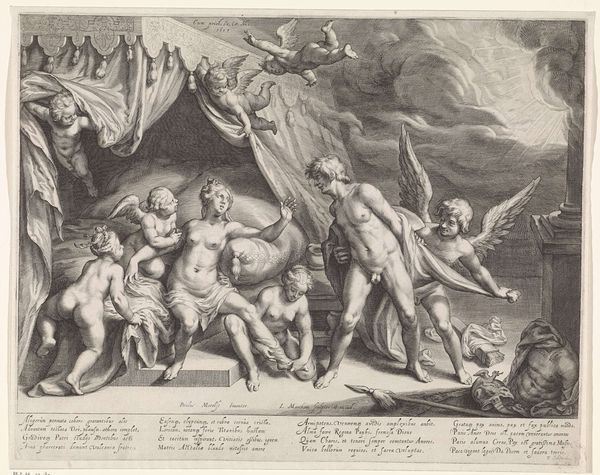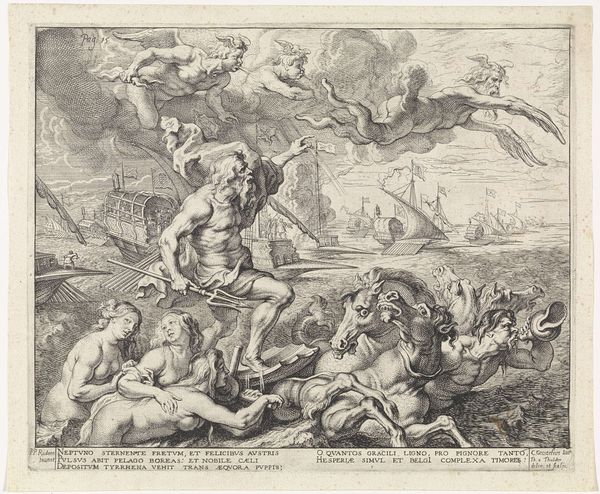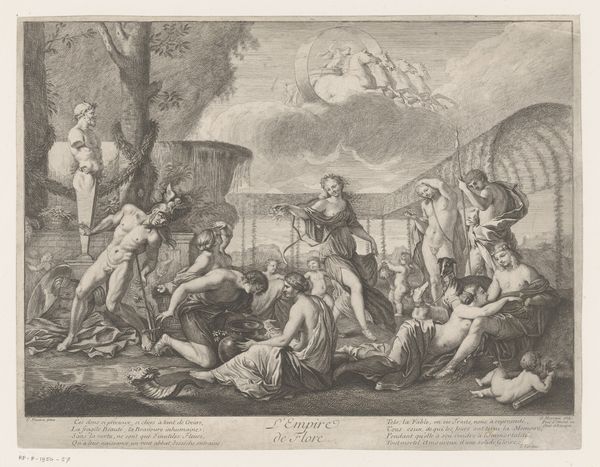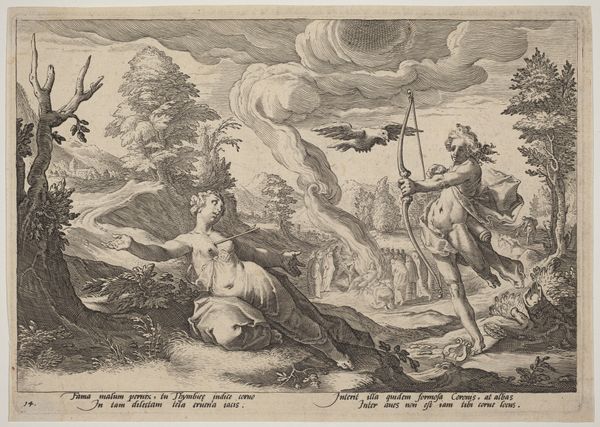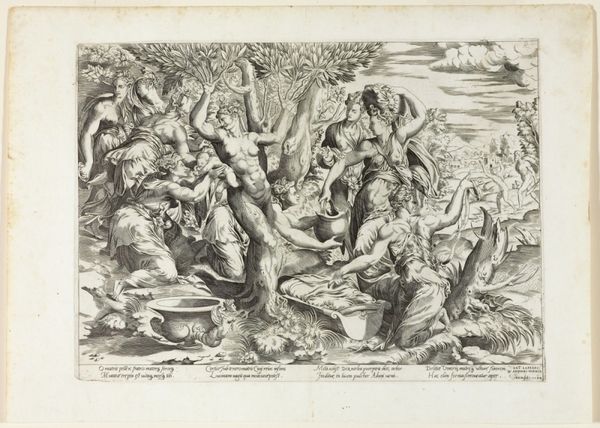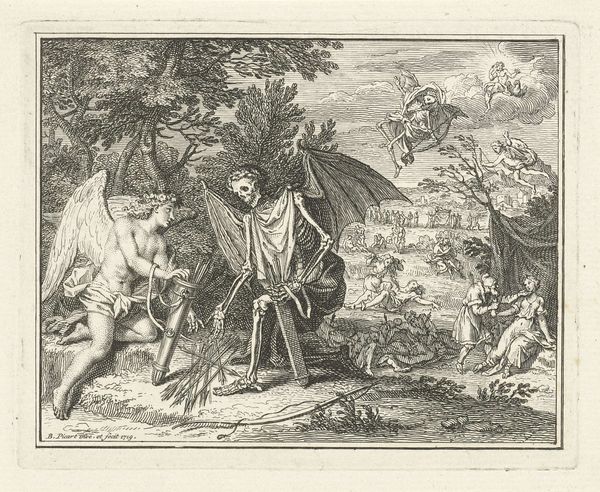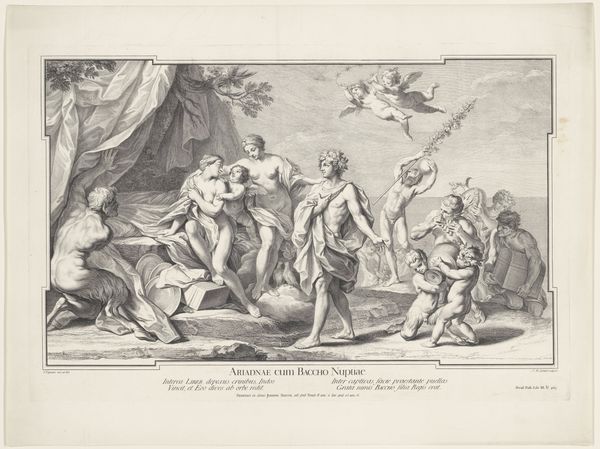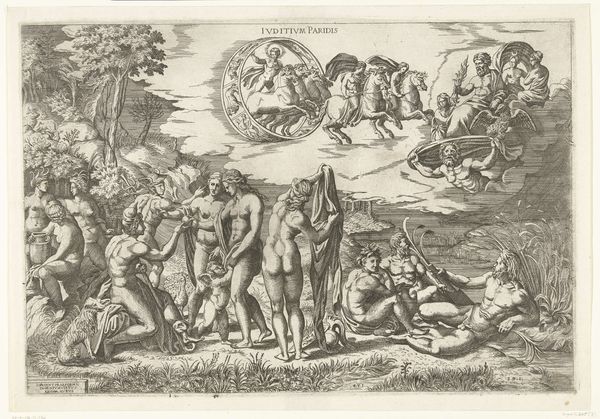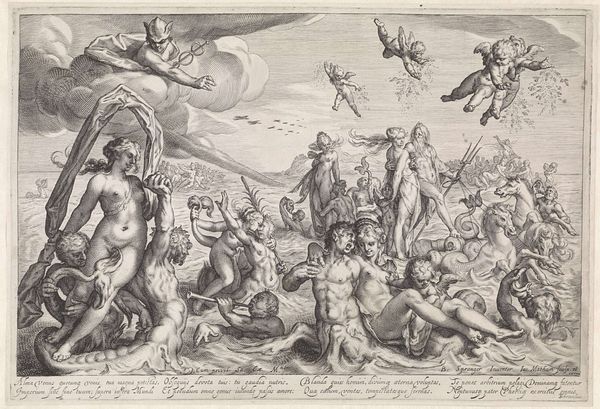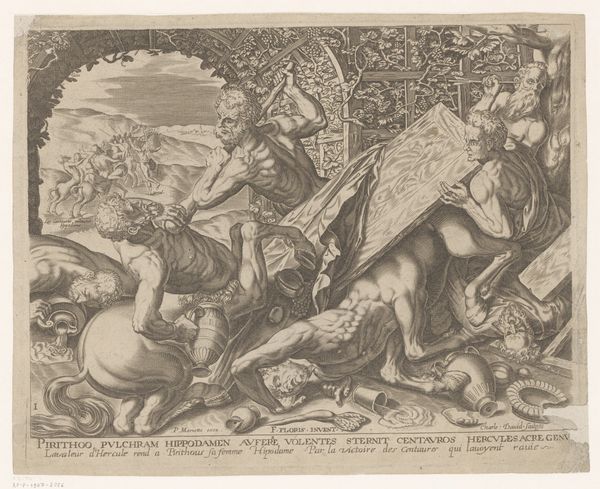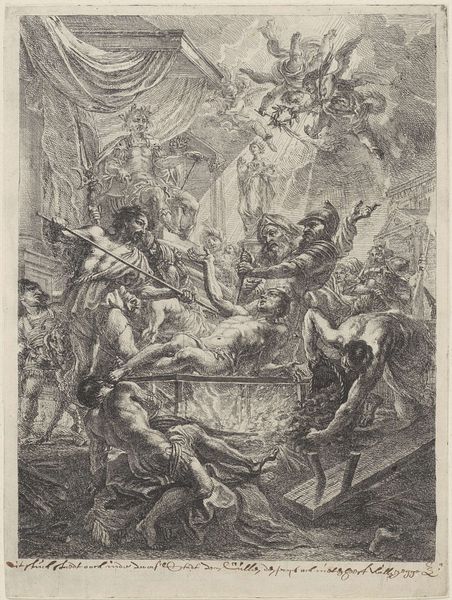
engraving
#
allegory
#
baroque
#
landscape
#
figuration
#
history-painting
#
engraving
Dimensions: height 288 mm, width 402 mm
Copyright: Rijks Museum: Open Domain
Wenceslaus Hollar created this etching titled *Allegory of the Peace of Westphalia* in 1648, which you can see here. It commemorates the end of the Thirty Years’ War, a conflict that devastated much of Europe. The image makes meaning through a visual code, characteristic of the 17th century. It uses classical and biblical imagery to suggest the restoration of harmony. We see an angel driving away the monsters of war; doves symbolizing peace; and figures who represent prosperity, security and concord. The work is heavy with symbolic meaning, yet it’s also clearly a political statement. The Peace of Westphalia reshaped the map of Europe and laid the foundations for the modern system of nation-states. Although the agreement was intended to create stability, its terms were immediately contested. Hollar’s image suggests a desire for peace amidst ongoing tension. Examining historical documents like treaties, letters, and political pamphlets helps us to understand the complex social conditions that shaped the production of art. The meaning of art changes depending on its social and institutional context.
Comments
No comments
Be the first to comment and join the conversation on the ultimate creative platform.
